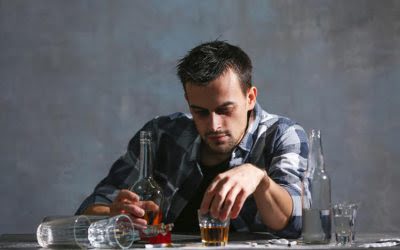While Rhinophyma is not directly caused by alcohol consumption, alcohol can trigger or worsen the symptoms of rosacea like redness on the skin. When the capillaries on the surface of the nose break they can then appear purple. Alcohol-related physical symptoms can vary in how well they can be treated and how permanent the effects are. Inflammed blood vessels, rashes, sagging eyes, and odor issues can all be eased or eradicated through reduced alcohol consumption and medical treatment.
Change Your Life Today.
Early signs often include persistent redness of the nose, increased sensitivity to touch or temperature changes, and occasional burning or stinging sensations. Transcend Recovery Community family of sober living homes provides a safe place for those undergoing mental health and addiction treatment to live with like-minded peers. Your doctor will treat early rhinophyma with oral medications, such as antibiotics or isotretinoin. If these medications don’t work, a plastic surgeon can use different surgery techniques to change the shape of your nose and improve your breathing. Some people with rosacea develop rhinophyma, but people without rosacea can have this disorder, too. People who may benefit from alcohol treatment programs may be deterred from taking initial steps in seeking treatment.
Rehab Treatment

People with fair or light skin tone, or those with a family history of rosacea, are more likely to develop rhinophyma. Some other symptoms include lumpy, thickened skin and broken blood vessels. Because for so many years people have assumed a connection between alcoholism and rhinophyma, a stigma has formed around the idea of an alcoholic nose. An alcoholic nose, also known as a drinker’s nose, is characterized by a red, bumpy, and swollen nose. If you or a loved one has an Alcoholics nose, getting help as soon as possible is vital.
Can Excessive Drinking Cause Alcoholic Bulbous Nose?
- Research has shown that vascular changes, such as flushing, are the first changes that signify rosacea.
- Even a glass or two of wine after work each day can spiral out of control without you realising, and you may be drinking much more than you think.
- This skin condition tends to run in families and affects certain ethnic groups more frequently than others.
- Getting a nose from drinking alcohol comes from a severe drinking habit.
While the exact cause of rhinophyma is unknown, evidence suggests there is a genetic and ethnic predisposition, typically running in families of fair-skinned, European descent. Surgical and drug-based treatments can help, but limited research suggests that the condition may recur after surgery. Rhinophyma can be effectively treated with surgical techniques such as dermabrasion, electrocautery, and laser therapy. Few long-term studies have explored how often rhinophyma recurs after surgery, though limited research suggests that this is possible.

The best way to combat the physical symptoms of alcoholism is to address the underlying addiction before it becomes too late. Contacting an alcohol use disorder treatment center can help offer advice on where to begin with recovery and how to get help immediately. If you are worried that your or a loved one’s drinking has become out of control, then contact a treatment provider today. Alcohol abuse reduces vascular control in the brain which can lead to blood vessels in the face becoming enlarged.
- ‘Alcoholic face’ or ‘puffy face’ is a result of the dehydrating effects of alcohol.
- Alcohol consumption can lead to the widening of blood vessels near the skins surface, resulting in increased blood flow to the face, including the nose.
- Rhinophyma is in a category of skin conditions known as rosacea, which causes chronic inflammation of the skin.
This allows blood to travel more easily through the vessels, causing a flushed look in the face. The We Level Up marijuana addiction NJ alcohol treatment center can supply information on proper rehab and detox programs to fit your demands. The patient and their physician can determine the best remedy for them.

To get rid of a red nose, an individual will need one or the other, if not both. This means people with a drinking nose have to take special care to clean their noses frequently. Medications may be oral or topical antibiotics designed to treat the underlying rosacea and reduce redness and inflammation.
Rhinophyma (enlarged nose)
Other medications may be used include metronidazole, ivermectin, oral isotretinoin, and brimonidine. Again, your exact treatment plan will depend on your specific situation and the severity of your rhinophyma. However, it frequently appears in individuals who have long-term rosacea. With your treatment program will come a support system of caring people who understand your challenges and will work with you while drinkers nose pictures you strive to become free of addiction.
